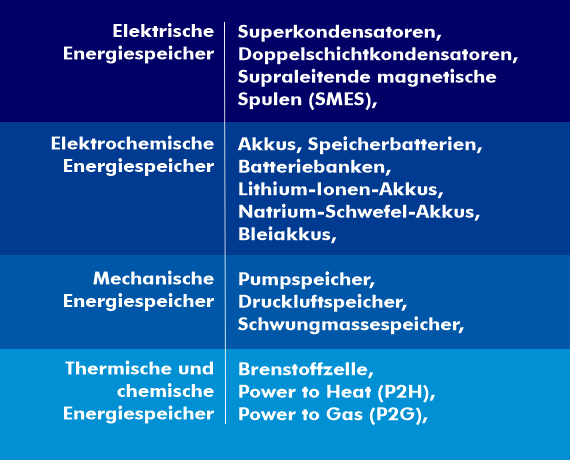electric energy storage (energy networks) (EES)
Electric Energy Storage(EES) is about reducing electricity consumption costs, improving network utilization, increasing energy supply reliability and improving power quality.
There are various technologies for electric energy storage. Almost all technologies work with the conversion of electrical energy into chemical, static, mechanical or thermal. Only a few technologies are based on electrical storage and discharge. These include capacitors or supercapacitors and superconducting magnetic coils. In all others, the electrical energy is first converted into another form of energy.
The various methods include electrochemical energy storage systems such as rechargeable batteries or battery banks, mechanical energy storage systems such as pumped storage power plants, compressed air storage systems and flywheel mass storage systems, and thermal energy storage systems such as fuel cells. The characteristics of the various methods differ considerably in terms of energy quantity, start-up time, discharge duration and service life.
A decisive advantage of the storage of electrical energy is that the generated energy can be shifted and the time of energy retrieval is determined solely by the use. This means that electrical energy can be stored in converted form in a wide variety of energy storage facilities in a decentralized manner, distributed throughout the supply network, for example in neighborhood storage facilities.

